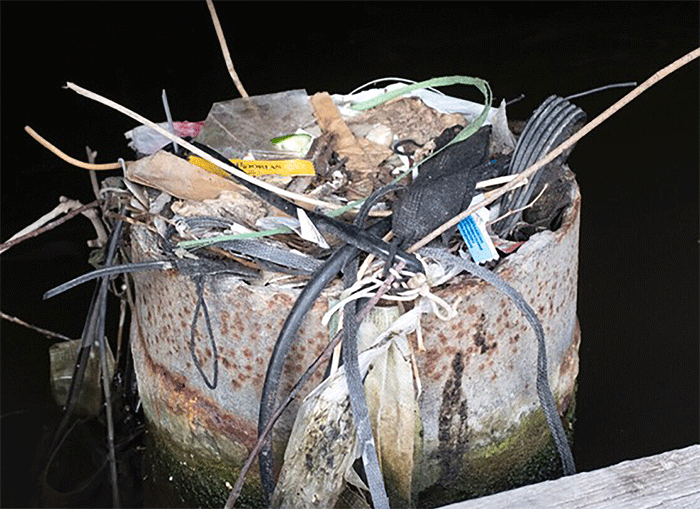From Twigs to Takeaway: Birds Chronicle the Plastic Epoch
Common Coots in Amsterdam are incorporating plastic litter into their nests, creating layered records of human consumption and pollution.

Birds as Unwitting Archivists of Our Plastic Age
Urban birds are inadvertently chronicling human environmental impact in a way that may surprise even the most seasoned naturalists. New research from the Netherlands reveals that Common Coots (Fulica atra) are integrating plastic waste into their nests, forming layered accumulations that act as historical records of our Anthropocene epoch. By examining these nests, scientists have uncovered a stratigraphy of human debris—plastic food packaging, face masks, and other disposable items—dating back decades.
A Plastic Legacy in the Canals of Amsterdam
Researchers from the Naturalis Biodiversity Center and Leiden University studied abandoned coot nests in Amsterdam’s canals, revealing an astonishing phenomenon: every nest contained plastic. While birds have long incorporated artificial materials into their nests, this study is the first to demonstrate that plastics, due to their durability, allow nests to persist over multiple breeding seasons. In essence, plastic is enabling a behaviour shift—nest reuse—that is uncommon in coots, which typically construct new nests each year due to the rapid decay of natural materials.
A particularly striking example is the “Rokin nest,” found beneath a dock in central Amsterdam. With over 600 plastic items woven into its structure, this nest contains a chronological record of human waste dating back nearly 30 years. Researchers were able to track its layers using expiry dates on plastic packaging, confirming nest reuse through archived Google Street View images. Items found in the nest include food wrappers, drink containers, and even COVID-19 face masks, highlighting the evolving nature of urban litter.
The Ecological and Geological Implications
The presence of plastic in bird nests is not just an ecological curiosity; it has significant implications for both ornithology and environmental science. By adopting durable artificial materials, birds may be modifying their behaviour in ways that could impact breeding success, predator interactions, and even species distribution in urban environments. Additionally, these plastic-laden nests serve as geological markers of the Anthropocene, preserving tangible evidence of human impact on ecosystems.
Plastics in nests function as a form of “technostratigraphy,” akin to human-created fossils that may one day be studied in the geological record. Much like layers of sedimentary rock, these artificial nest deposits reflect a timeline of human activity, from the rise of fast food packaging to the emergence of disposable pandemic-related waste.
A New Tool for Environmental Science?
The study suggests that bird nests could serve as valuable tools for environmental monitoring. Since plastic packaging often carries production or expiry dates, nests can provide insights into urban pollution trends over time. This method offers a novel and cost-effective approach to tracking plastic waste accumulation and its long-term persistence in natural environments.
While birds such as coots and grebes have proven remarkably adaptable to urban life, the full ecological consequences of plastic incorporation into nests remain uncertain. Could long-term nest reuse impact reproductive success? Does the presence of synthetic materials alter nest temperature or humidity? Future research will seek to answer these pressing questions.
The Future of Bird Nests in a Plastic World
As plastic waste continues to accumulate in ecosystems worldwide, birds will likely remain unwitting participants in its spread. The evidence from Amsterdam’s canals underscores the pervasiveness of human debris and raises important questions about the resilience of wildlife in the face of environmental change.
Whether we regard these plastic-laden nests as a testament to avian ingenuity or a stark warning about the state of our environment, one thing is certain: birds are documenting the Anthropocene in a way that no historian ever could.
14 Mar 2025
Share this story







